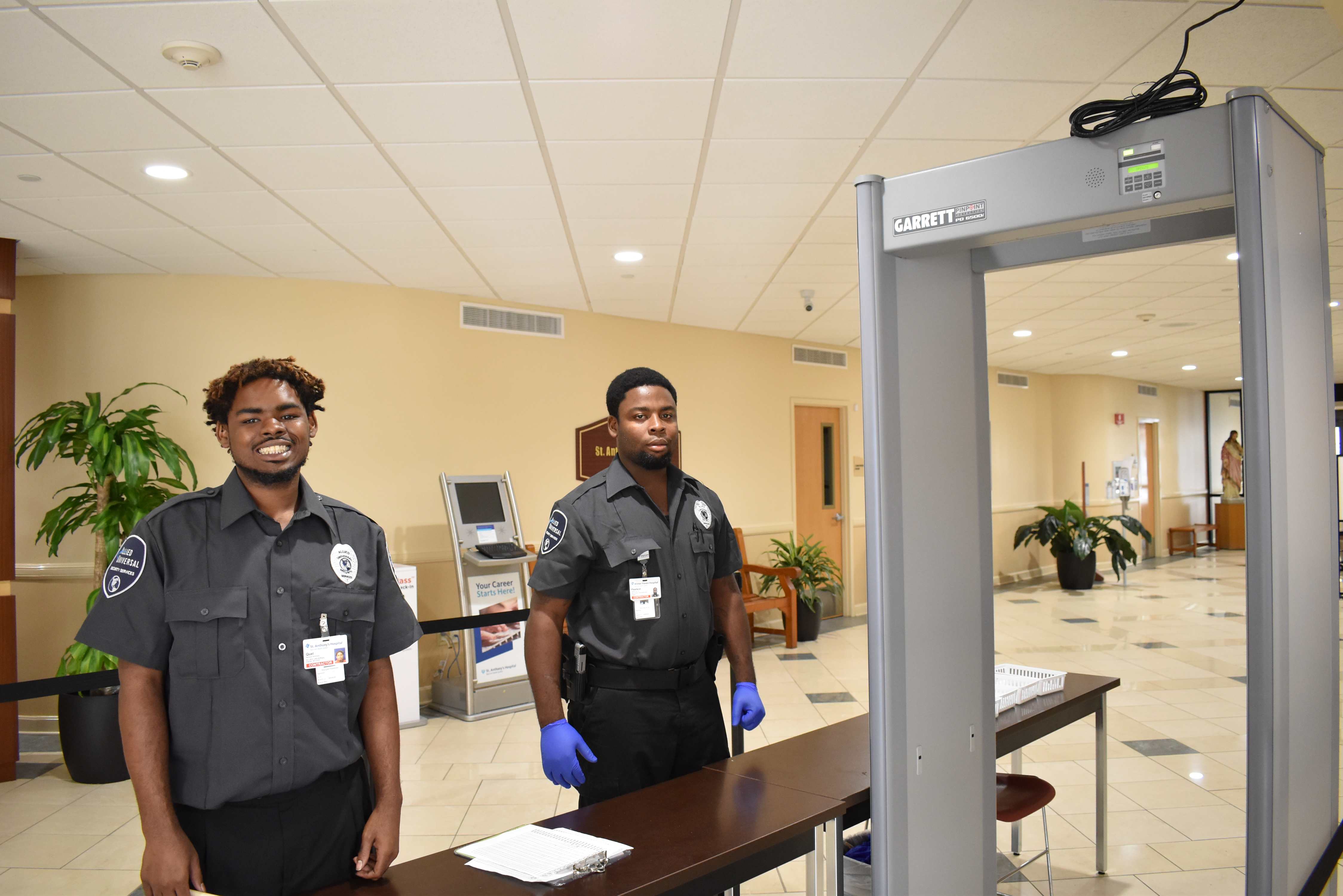Know
BayCare beefs up hospital security with metal detectors, visitor badges

Most of us have gotten used to walking through metal detectors at airports, government buildings and sports stadiums. Now, add BayCare Health System hospitals to the list.
Visitors to most BayCare hospitals now have to pass through metal detection screening and show identification to get photo ID badges before they can enter the facility.
BayCare started rolling out the new security measures last year and will continue to implement them over the next few months, said John Nicely, director of safety and security.
BayCare is among a small but growing number of healthcare providers that have installed metal detectors. Proponents say having metal detectors in place can stop weapons from getting into the hospital, deter people who are thinking about bringing a weapon to the hospital, and provide staff with some psychological support and give them a sense that the facility is doing all it can to protect them. Opponents say the systems are expensive, won’t detect every weapon and give some patients and visitors an impression that they are coming into an armed fortress rather than a place of healing.
BayCare, based in Clearwater and the largest not-for-profit healthcare provider in the Tampa-St. Pete area, isn’t saying which hospitals currently have metal detectors in place, but St. Anthony’s Hospital in St. Petersburg began using them last week.
“Safety is a primary concern for BayCare. Nothing specifically has happened at our hospitals but we want to keep a safe and secure environment for our patients, physicians and anyone in our buildings,” Nicely said.
There’s been a spate of shootings at hospitals around Florida in recent years. In 2015, a man shot and killed his stepdaughter and himself in a patient room at what was then Florida Hospital Tampa, now AdventHealth Tampa. A patient and a hospital employee were killed in a shooting at a Titusville hospital in 2016, and this past March, an emergency room doctor at a VA medical center in Riviera Beach was shot while tackling a veteran who opened fire inside the hospital.
The safety of patients and employees is the top priority at AdventHealth, a spokeswoman said. “We have security procedures across all our hospitals that range from photo ID for visitors, limited entry points for visitors, restricted areas that require employee badge access, and video monitoring. Our security enhancements at each hospital are based on the needs of that facility. We continue to monitor, evaluate and update our procedures regularly.”
HCA West Florida, with several hospitals in the area, has a similar approach. “We use a wide range of security measures, based on the needs of the facility. In addition to systems such as Photo IDs, onsite security, video monitoring, lighting and restricted access, our colleagues receive training at orientation, participate in safety drills and are encouraged to communicate concerns immediately,” a spokeswoman said.
More than half of American hospitals witnessed an increase in violence against staff over the past year, according to a 2018 study by the American Society for Health Care Engineering. The study found all of the 315 hospitals surveyed already had electronic-access control or planned to implement it, Health Facilities Management reported. Most also reported having video surveillance systems, the ability to electronically lock down the hospital, and a panic alarm system. Forty-two percent had a visitor management system that in some cases required showing identification and getting a photo badge, and 11 percent had walk-through metal detectors.
At the BayCare hospitals, metal detectors are in place at all public entrances, including the emergency department and ambulance entrances.
“As people are coming in to the ED entrance and the ambulance entrance, we work with the clinicians on the acuity of the patient. The vast majority of patients coming to the ED go through screening right away but there are a portion having some serious issues, and we see that upfront. They directly bypass the screening and get connected to the clinical team for their care. We don’t at all stop anyone with a high acuity issue coming into the ED,” Nicely said.
There have been few long waits to get into the hospitals and the process generally goes quickly, he said. BayCare is using an outside national company to assist with the screening, and also has trained its own security force to partner with them so the teams can work together.
A spokeswoman for BayCare declined to say how much the system has spent on security measures, including equipment, training and construction required to adapt facilities, but she said the initiative has full support from senior management, which considers it a very important project.
Metal detectors and badges are just one part of the process.
“We’re working on workplace safety training a multitude of ways. The metal screening is a piece of the puzzle, but a variety of other trainings that we are having for our teams incorporates that also,” Nicely said.
Overall feedback has been positive, he said.
“The hospitals have always been focused on providing a safe and secure environment. That’s always been important in healthcare and at BayCare. But our values and what we’re trying to focus on in taking care of people — both the patient and everyone around — have led us to add this mix,” Nicely said.








mary stenov
July 13, 2019at10:08 pm
Goodness – I really – really understand why we have this security – but as you mentioned – it does feel as one is entering a zone of fear – almost as a prison would be – goodness – goodness how sad it is to have such a facility violated – I love St.Anthony’s hospital – the staff and personnel is wonderful – but how sad – again that we have developed such a violent society – I am a teacher – actually have taught for 53 years – love all my students – never suspect any violence – but what have we done to our youth – or not done – Carpe Diem – every day!